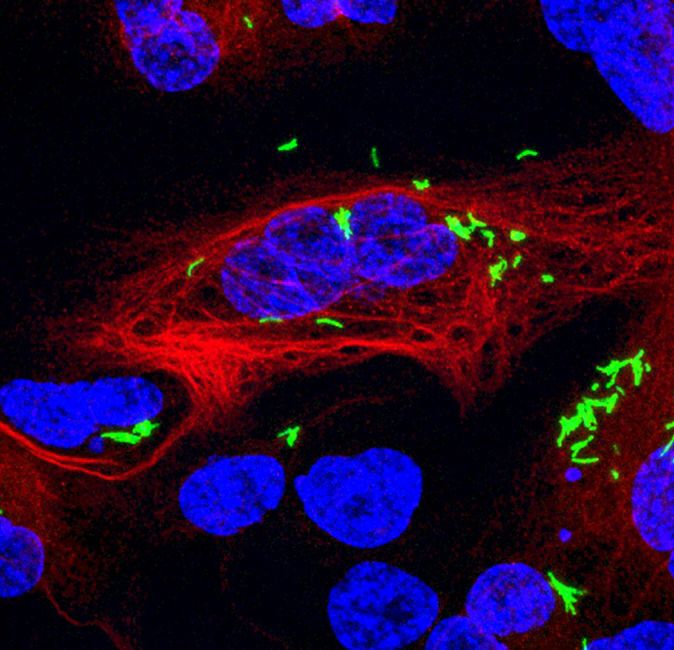Researchers identify faster, more effective drug combination regimens to treat tuberculosis

Human white blood cells infected with tuberculosis bacteria, shown in green. Photo credit: UCLA D.L. Clemens
Written by Enrique Rivero
Tuberculosis is a potentially deadly though curable disease. Each year about 10 million people develop active cases, and 1.6 million people die. In addition, about 1.7 billion people around the world are infected with TB bacteria, which can lie dormant for weeks to years, then become active and cause disease in up to 10 percent of those who are infected.
Today, people who contract tuberculosis typically take a course of drugs for six to eight months. However, the length of treatment means some patients don’t stick with the therapy or may develop adverse effects from drug toxicity. Some may develop resistance to the drugs, requiring changes in the drug regimen that can lengthen the treatment to as long as two years. Even worse, there is a high fatality rate among those with drug-resistant TB. Read more.